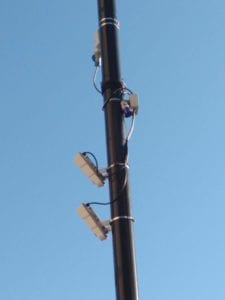Transport for London (TfL) is increasing the number of AI-enabled sensors on its road network to help plan and operate new cycle routes in the UK capital.
Since 2018, TfL has trialled sensors from London-based tech firm Vivacity Labs at two locations along Millbank.
Now, the transport authority has said it is in the process of introducing 43 more Vivacity sensors at 20 central London locations to gather data and further test to understand the full range of capabilities the technology has to offer.
Glynn Barton, TfL’s director of network management, said: “We work around the clock to keep people in London moving and we’re always looking for innovative new ways of making our roads safer and more efficient.
“New data from trials such as this will be really valuable as we invest and make day-to-day decisions to enable more people to walk and cycle.”
The trial, which is the first time the technology has been used within London, reportedly showed that the Vivacity sensors are up to 98% accurate.

Developed over four years of research and development, the sensors use AI to detect road users and decide which mode of transport they are using.
The sensors also gather data continuously to provide a detailed picture of how London’s roads are being used.
All video captured by the sensors is processed and discarded within seconds, meaning no personal data is stored.
TfL said it will use data from sources such as the sensors to work out where investment in new infrastructure can best be targeted.
As well as detecting people cycling, the sensors also detect people walking and other types of traffic, including cars, HGVs, vans, motorcyclists and buses.
The sensors are part of a wider programme of modernisation of TfL’s current road network systems and could link up to London’s traffic signals and control centre systems to provide data in real time.
TfL claimed this will lead to a better understanding of demand on the road network and how the organisation can balance it and manage congestion.





